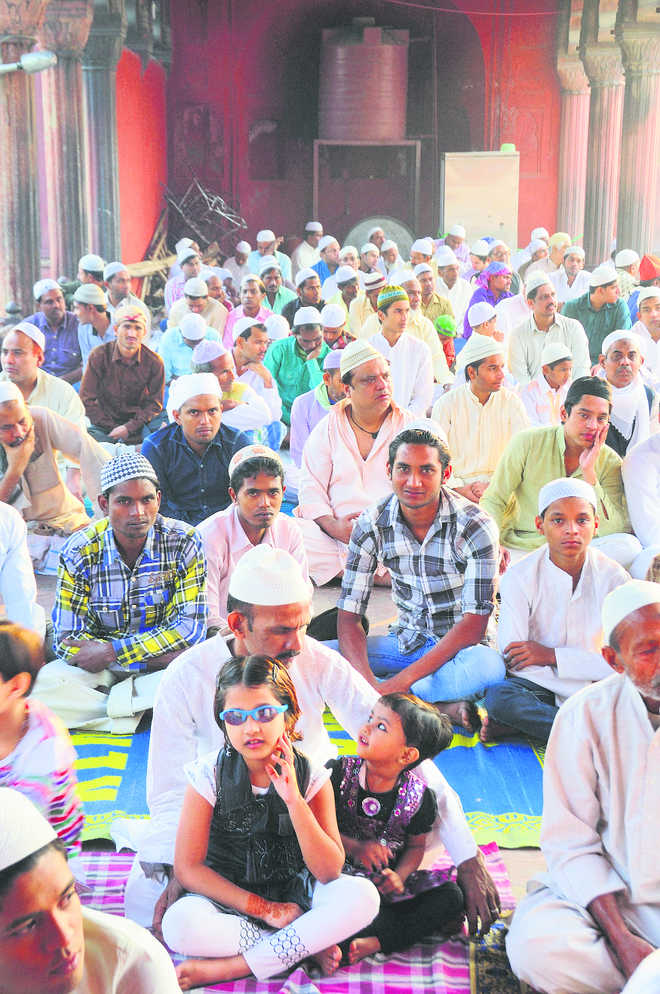
Shadows of doubt: The book, though based on Batla House shootout 10 years ago, is still topical. Many Muslim youths increasingly face a conflict of identity as they grow up in an atmosphere of mistrust . iStock
Aradhika Sharma
On September 19, 2008, Delhi was ripped apart by five low intensity bombs in various parts of the city. At least 30 persons were killed and 90 injured. A terrorist outfit, the Indian Mujahedeen, claimed the responsibility.
Acting on a tip-off, the police conducted a raid in Jamia Nagar, a crowded Muslim area in Delhi. The address was L-18, Batla House. The result was an encounter between the police and the purported terrorists hiding inside the house, most of whom were from Azamgarh in UP. The shootout resulted in the death of an “encounter specialist” police inspector and two ‘terrorists’, while two suspected extremists escaped.
However, several questions, still unanswered, were raised by people about the version that the police gave out about the Batla House encounter. It was pointed out that the state’s account of the shooting was full of contradictions, and even today the speculation is still on whether it was actually a shootout or a conspiracy. The media, too, did not play a salutary role, since their coverage was, in fact, a confused reporting of the facts based on very little evidence.
However, the greatest and lasting effect of the Batla House shooting was on the residents of the locality, especially the immigrants from Azamgarh, who had to suffer the ignominy of automatically being branded terrorists. Many lost their jobs and admissions in schools and colleges and the consequent marginalisation left lasting mental and emotional scars on the student community living in the area.
Farooquee writes that deep distrust still gets reinforced in the heart of the minority community, when, time after time, it feels unfairly targeted by the police and the state machinery. In an increasingly polarised country, this book underscores the harsh realities of growing up as a part of a ‘demonised’ minority community.
Neyaz Farooquee’s account narrates how it is to be a Muslim in India, to live in a rundown part of the city and to be typecast and treated with suspicion by the mass media, the state, the public and the police. In such a scenario, Farooquee’s is certainly a clear and unafraid voice.
An Ordinary Man’s Guide to Radicalism is a novel about the author’s formative years. Hailing from a respectable and pious home in Inderwan Bairam in Bihar’s Gopalganj district, 10-year old Farooquee is dispatched to Delhi in quest of better education. Always considered a bright student in his home town, he struggles with an alien language and culture in Delhi and is soon relegated to the back benches in school.
Over the years, he experiences a transformation: “…without realising it. This village kid from a religious family grew up into a city-dwelling young man with a sense of gnawing victimhood, real and perceived.” The victimhood had its roots in the Batla House encounter which had “driven him nearly berserk, like it did many youth in Jamia Nagar….It set me wondering why the youth in disturbed areas took up arms. Why, and also how?”
The narrative captures the oppressive atmosphere after the shooting at Jamia Nagar. How the Muslim residents, who had been living there for a long time, were hounded by the media and the police. And how they continually had to prove that they were not possible or potential terrorists themselves but, in fact, “Normal human beings.” Jamia Nagar is “typical India” says Farooquee, “But with a different memory: that of riots, of discrimination, of victimhood, of paranoia, real and imagined…”
Growing up amid occurrences of innocents getting caught in the crossfire of counter-terror, people getting falsely indicted, illegal detentions and stories of police torture created an intense conflict of identity and belongingness in a country that was supposedly the author’s own. Naturally, the conflict of identity must affect the moral and spiritual education of the young people of the community.
Till date, alas! This conflict continues and in fact is increasingly faced by many members of the community. In this context, specially, An Ordinary Man’s Guide to Radicalism is a significant and — even though it is based on an episode that occurred 10 years ago — still a topical book.



























